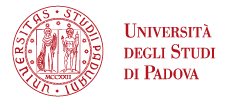PRIN 2022 / Dabalà

Titolo: Development of methods for the assessment of stresses in prestressed concrete elements by X-ray diffraction
Responsabile scientifico: prof. Manuele DABALA'- Dipartimento di Ingegneria Industriale-Università degli Studi di PADOVA
Coordinatore: prof. Francesco MORELLI– Università di PISA
Partner-Unità di ricerca: Politecnico di MILANO, Dipartimento di Ingegneria Industriale-Università degli Studi di PADOVA
Bando: PRIN 2022 - Decreto Direttoriale n. 104 del 02-02-2022
Durata: 28/09/2023 - 27/09/2025 (24 mesi)
Budget totale progetto: € 224.046,00
Abstract del progetto
The main goal of the research is to provide a reliable approach for the estimation of the residual prestress in prestressed concrete members based on the measurements done by X-ray diffractometry. The research will also quantify the effect of uncertainties associated to the prestress assessment and will analyze the most suitable procedures to make the approach as much reliable and practical as possible.
The procedure can be, theoretically, applied to the estimation of the prestress in all the existing prestressed concrete elements and members, spacing therefore from floor joists to the long span beams for industrial buildings and to the bridge members. Among these typologies, the current most relevant application field is represented by post-tensioned existing bridges. Indeed, the attention to these structures has skyrocketed in recent years due to several factors: the increased awareness that the absence of a proper monitoring of the structural conditions has led to uncontrolled accumulation of damage; most of the bridges/viaducts are reaching their design lifetime; the traffic loads are steadily increasing in the last decades, the recent collapses of several bridges over the Italian territory.
However, while several NDT methods already exists for the definition of the position of the prestressing and mild reinforcements, for the localization and quantification of eventual damages on the prestressing systems (e.g. voids in the ducts or corrosion), many other characteristics are still difficult to be assessed. Among them, the residual force in the prestressing steel elements and the associated residual compression force in the concrete are two of the most relevant and difficult ones to be estimated.
In this context, the research aims at providing a method for the assessment of the residual prestressing force in PC members. To this end, the experimental and numerical studies are organized into the following three levels depending on the specific aspect studied:
•Material Level. The studies in this level will focus on the influence of some geometrical (e.g. local curvature) and surface conditions (e.g. presence of oxidated/corroded layers) parameters on the direct measurements of the residual stresses on the steel surface.
•Stressed steel element Level. The influence of the geometry of the prestressing steel element (e.g. multiple-wire strand) as well as of the method adopted to clean the steel surface from the concrete layer will be studied. The main goal is to provide a relationship between the estimation of stresses obtained through X-ray diffractometry and the total tensile force in the prestressing steel element, including the estimation of the error associated, as well as information about the optimal practical cleaning procedure.
•Prestressed Concrete member Level. The studies will aim at providing the complete procedure that will relate the local stress measurements and the total prestress force on the PC member.





